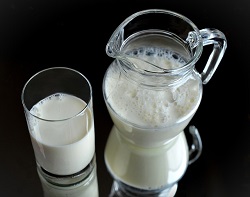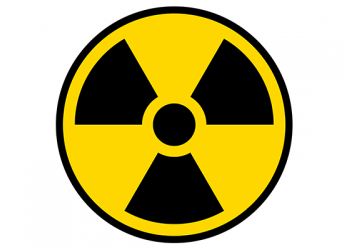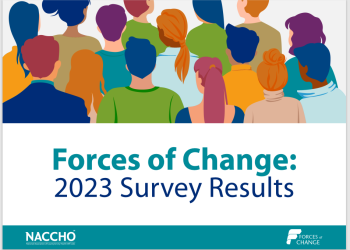 The number of states legalizing the sale of raw milk is on the rise—and so is the number of raw milk-related outbreaks.
The number of states legalizing the sale of raw milk is on the rise—and so is the number of raw milk-related outbreaks.
According to the Centers for Disease Control and Prevention (CDC), the number of states that allow the sale of raw milk increased from 22 to 30 between 2004 and 2011 [1]. With more people able to obtain the beverage, there has been a 70% increase in outbreaks linked to raw milk between the time periods of 2007-2009 and 2010-2012.
Many people choose unpasteurized milk for its supposedly greater nutrition and “creamier” taste. But since raw milk does not go through a disinfection process, it can carry harmful pathogens that make people sick, including bacteria, parasites, and viruses. The three germs that caused the most raw milk-related outbreaks from 2007-2012 were Campylobacter, E. coli, and Salmonella.
Although a majority of the outbreaks occurred in states that permit the sale and marketing of raw milk, all areas are at risk. There are ways to acquire raw milk, while still abiding by state laws. Residents of states that outlaw the sale of raw milk can simply purchase it in neighboring states where it’s legal. Those who own cows can legally drink the raw milk they produce. Some states permit cow-sharing programs, in which a cow has multiple owners who distribute the raw milk amongst themselves. And, there are programs that rent livestock to people for short periods of time, during which they can milk the animals.
For these reasons, no local health department is exempt from the possibility of raw milk-related outbreaks. The following examples of raw milk-associated outbreaks and responses can help local health departments prevent and prepare for such events.
2014 Utah Campylobacter Outbreak
In 2014, Utah experienced its largest raw milk-associated Campylobacter outbreak, resulting in 99 identified infections, of which there were 10 hospitalizations and 1 death [2]. The Utah Department of Health (UDOH) collaborated with the U.S. Department of Agriculture (USDA), Utah Public Health Laboratory (UPHL), local health departments, and federal partners, to end the outbreak.
USDA visited the farm where many of the victims had purchased raw milk. An inspection found only one temperature violation and no cultured pathogens in a milk sample. But further investigation on July 29 discovered Campylobacter in a sample, and the names of 18 infected individuals, who originally denied drinking raw milk, in the farm’s raw milk ledger.
On August 4, USDA suspended the farm’s permit to sell raw milk. Between August and the beginning of October, there were no raw milk-associated cases. The permit was reinstated on October 1 after USDA did not draw any positive samples from the raw milk bulk tank. But seven more cases emerged, and USDA permanently revoked the permit, ending the outbreak.
In a recently aired NACCHO webinar, “Legal Aspects of Raw Milk,” Kenny Davis, epidemiologist and enteric disease investigator at UDOH, attributed the success of the investigation to cooperation among different institutions. “We couldn’t have done any of this without collaboration from our local health departments, the Department of Agriculture and our UPHL as well as our federal partners at CDC and FDA [U.S. Food and Drug Administration],” he said. Davis recommends that local health departments maintain relationships with other public health institutions in order to prepare for raw milk outbreaks.
In addition, Davis suggests that local health departments consider specific pathogen testing, enforce rules and regulations, and educate the public about the risks of drinking raw milk.
2010 Colorado Campylobacter and E. coli Outbreak
In 2010, Boulder, CO experienced a dual outbreak of Campylobacter and E. coli that developed out of a raw milk share [3].
The first case of Campylobacter emerged on June 18, and an epidemiological investigation found that the infected man was part of a raw milk share. Boulder County Public Health (BCPH) contacted other shareholders, and on June 24 a second case surfaced.
BCPH and the Colorado Department of Public Health and Environment (CDPHE) conducted an investigation on the dairy farm, identifying sick animals and unhygienic practices. Some of the goats were on antibiotics and had lesions on their teats. The handwashing sink was not easily accessible and the milk was not properly refrigerated. In addition, Colorado requires by law that dairy farms inform their sharing program participants that the milk is unpasteurized, which the farm had failed to do.
More cases emerged, including individuals with a dual infection: both Campylobacter and E. coli. The health departments had to stop the raw milk operation at the dairy farm, causing some controversy in the community since many raw milk advocates hoped to continue drinking it. In NACCHO’s webinar, “Raw Milk and the Public’s Health: Stories from State and Local Health Departments,” Lane Drager, consumer protection coordinator at BCPH and president at Colorado Environmental Health, said they could not allow the farm to distribute raw milk with disease continuing in the community. “It was a very challenging issue to find a way to actually reopen [the raw milk share] given there really is no way to prove raw milk is safe,” he said.
Laboratory results confirmed that the pathogens in the infected individuals matched those in the milk and goat feces, proving that the dairy farm was the source of the outbreak.
The community suffered financial consequences in addition to health consequences. The investigation cost BCPH $22,000 and CDPHE $17,000. Healthcare for the patients collectively cost $315,000. These expenses indicate the importance of preventing outbreaks, in order to avoid both health and financial impacts.
Prevention efforts should include education, since some people drink raw milk for reasons that are not scientifically proven. Drager talked to people affected by the outbreak and asked what drove them to choose raw milk. The top reasons were that it is more nutritious, natural, and creamier, helps with lactose intolerance, tastes better, boosts the immune system, and helps with allergies. Some of these reasons are very subjective, but a few of the most common responses are inaccurate. In his research, Drager found that the nutrition of raw milk compared to whole milk is relatively similar, and the main difference is the supplements added to pasteurized milk. Also, there is yet to be evidence of raw milk helping allergies or the immune system. “There really are no good studies that support that,” Drager said.
To continue supporting local health departments in their efforts to improve food safety and prevent foodborne illness, NACCHO is developing a fact sheet that investigates the history of raw milk-associated outbreaks, examines the legalities of raw milk sales, and provides preparedness and prevention tips for health departments faced with the possibility of outbreak. Check back with the blog for updates.
For more information on raw milk, visit:
- Legal Aspects of Raw Milk (NACCHO)
- Raw Milk and the Public’s Health: Stories from State and Local Health Departments (NACCHO)
- Raw Milk Questions and Answers (CDC)
- Raw Milk Facts State by State (Real Raw Milk Facts)
- The Centers for Disease Control and Prevention. Increase in Outbreaks Associated with Nonpasteurized Milk, United States, 2007-2012. Retrieved June 24, 2015 from http://www.cdc.gov/foodsafety/rawmilk/nonpasteurized-outbreaks-2012.html
- National Association of County and City Health Officials. Legal Aspects of Raw Milk. Retrieved June 24, 2015 from https://naccho.adobeconnect.com/_a1053915029/p7qasxp5649?launcher=false&fcsContent=true&pbMode=normal
- National Association of County and City Health Officials. Raw Milk and the Public’s Health: Stories from State and Local Health Departments. Retrieved June 24, 2015 from https://naccho.adobeconnect.com/_a1053915029/p6l6jevimbz/?launcher=false&fcsContent=true&pbMode=normal







